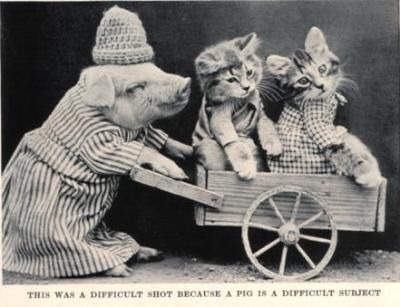
There is a grand tradition of photographing cats in silly situations and adding humorous captions that’s as old as photography. Over a hundred years before Icanhascheezburger.com and lolcats.com, there was Brighton, England photographer Harry Pointer and his “Brighton cats” series.
During the Victorian era Pointer discovered an untapped market for visiting cards and greeting cards featuring anthropomorphized cats with funny or sweet captions, doing things like having tea, demanding dinner, rollerskating, and taking photos themselves. Pointer created about 200 lolcat portraits in his “The Brighton Cats” series by 1884. He made a killing selling these images on visiting cards and greeting cards.
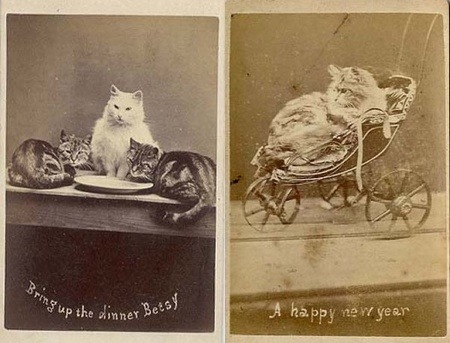

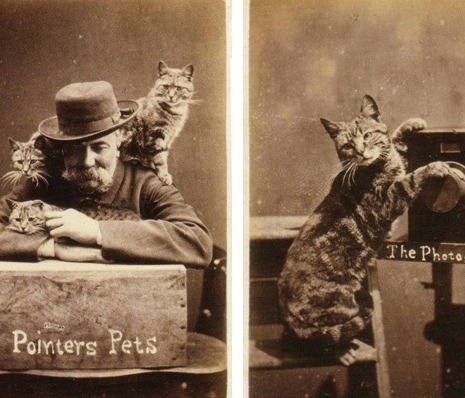
Pointer’s cats were also very much alive.
You can’t say the same of American photographer Harry Whittier Frees’ subjects when he came along thirty-six years later. Frees did similar tableaux using pigs, rabbits, dogs, and cats but usually without funny captions. Frequently dead cats, because they hold still better. Many of the twee domestic scenes he set up also included eerie-looking china dolls. He wrote in Animal Land on the Air that his images “represent an almost inconceivable amount of patience, care, and kind attention, as well as a very large number of spoiled films.” Maintaining the fantasy that all of the animals he used were alive and squirming around.
Frees wrote:
Rabbits are the easiest to photograph in costume, but incapable of taking many “human” parts. Puppies are tractable when rightly understood, but the kitten is the most versatile animal actor, and possesses the greatest variety of appeal. The pig is the most difficult to deal with, but effective on occasion. The best period of young animal models is a short one, being when they are from six to ten weeks of age. An interesting fact is that a kitten’s attention is best held through the sense of sight, while that of a puppy is most influenced by sound, and equally readily distracted by it. The native reasoning powers of young animals are, moreover, quite as pronounced as those of the human species, and relatively far surer.
Frees began his cat portraits in 1905, when he photographed the presumably alive family cat wearing a party hat at a birthday celebration. Like Pointer he made good money selling the reproductions for postcards, calendars, and publications. But it takes much of the “lol” out of “lolcat” to use dead animals in poses, like something out of Rob Zombie’s House of 1000 Corpses.
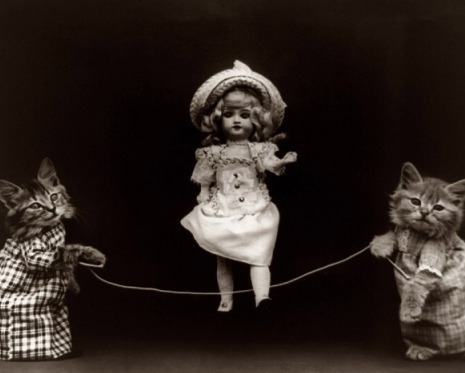
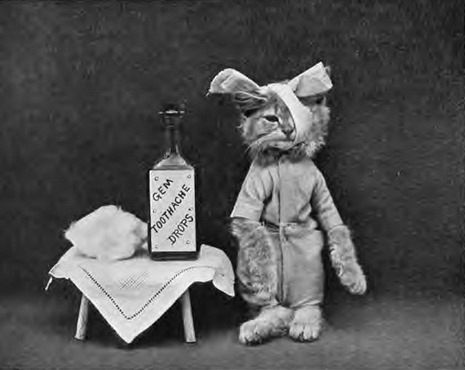
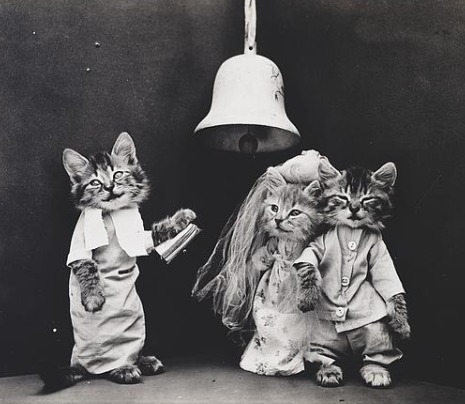
If Frees’ contemporaries knew that many of the animals in his photos were dead, they probably didn’t care. Victorians and Edwardians had no problem photographing dead things, including their own relatives, going so far as to pose with them in depressing family portraits before burying them. There are still people who take pictures at funerals, but come on, North American funereal customs are awful enough without that being a widespread practice.
The amount of patience required to take a camera-phone picture of live, active, wriggly, uncooperative cats is impressive. But using the old-school photographic techniques? Pointer must have had a Zen master level of serenity. Frees was admittedly resourceful and found a cheap, easy, pragmatic solution to the problem. He was still, however, a creepy bastard.